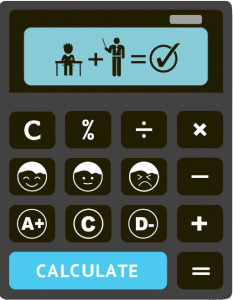Overview
Statistics covers a good part of your year 11 HSC Advanced Maths syllabus, and it all starts here. You should understand discrete random variables well, know how they differ from continuous random variables, and be able to do simple problems on probability related to such variables.
Learning Outcomes
After reading this article, you should
- Understand what a random variable is
- Understand what a discrete random variable is
- Be able to do simple problems related to their probability distribution
What’s a Random Variable?
In statistics, a random variable is a function or a rule that assigns a unique numerical value to each outcome of an experiment or trial. Take the simple case of flipping two coins at the same time. The list of possible outcomes, also known as the sample space, is {(H, H), (H, T), (T, H), (T, T)}. We can define a random variable X as the number of heads showing up. So, X can have values equal to 0, 1 or 2. Then we can find the probabilities of our random variable X having specific values.
In this case, P(X = 0) = 0.25 (1 out of 4 cases), P(X = 1) = 0.50 (2 out of 4 cases) and P(X = 2) = 0.25 (1 out of 4 cases).
Discrete and Continuous Random Variables
Random variables can be discrete or continuous.
Let’s say there are 25 students in a class, and we define a random variable Y as the number of boys in the class. So, Y can have any one of the values from the set {0, 1, 2, 3, …., 24, 25}. Y can’t have a value of 9.628 or 15.597641, right? Such a random variable is called a discrete random variable. They can assume only specific values and not any value! We can enlist the possible values our random variable can assume.
On the other hand, we can define another random variable, Z, as the height in cm of each student in the class. The height of a person can be 151.584 cm or 163.7125 cm. There is no restriction in this case. There is no way we can enlist all values Z can have. Such a random variable is called a continuous random variable.
Probability Distribution
Consider the example of throwing two 6-faced dice (numbered 1, 2, ….6) simultaneously. We define the random variable X as the sum of the numbers obtained on the two dice. Thus, the minimum possible value of X is 1 + 1 = 2, and its maximum possible value is 6 + 6 = 12.
Clearly, X is a discrete random variable, as it can only assume specific values between 2 and 12 inclusive. It can’t be a decimal number. The table below shows the possible outcomes (first row and first column) and the corresponding values of X (rest of the table). The number in a particular cell is the sum obtained from the top-most cell and left-most cell (representing the two throws).
| 1 | 2 | 3 | 4 | 5 | 6 | |
|---|---|---|---|---|---|---|
| 1 | 2 | 3 | 4 | 5 | 6 | 7 |
| 2 | 3 | 4 | 5 | 6 | 7 | 8 |
| 3 | 4 | 5 | 6 | 7 | 8 | 9 |
| 4 | 5 | 6 | 7 | 8 | 9 | 10 |
| 5 | 6 | 7 | 8 | 9 | 10 | 11 |
| 6 | 7 | 8 | 9 | 10 | 11 | 12 |
There are 36 possible outcomes in the table above, but they aren’t all different. The table below shows the probability distribution of all unique outcomes.
| X | 2 | 3 | 4 | 5 | 6 | 7 | 8 | 9 | 10 | 11 | 12 |
|---|---|---|---|---|---|---|---|---|---|---|---|
| P(X) | 1/36 | 2/36 | 3/36 | 4/36 | 5/36 | 6/36 | 5/36 | 4/36 | 3/36 | 2/36 | 1/36 |
Note that the sum of the probabilities in the table above must add up to 1. If you encounter a situation where one of the values is missing, you can easily find it by adding the rest and subtracting the sum obtained from 1.
Also note that from the information above, we can answer questions such as “what is P(X ≤ 8)?” You can get this by adding P(X = 2) + P(X = 3) + P(X = 4) + P(X = 5) + P(X = 6) + P(X = 7) + P(X = 8) = 26/36.
Finally, we can draw a graph from the probability distribution, as shown below.
Wrap Up
In simple terms, a random variable is a number that describes the outcome of a chance event. They are used in mathematical modelling and statistical analysis. In probability theory and statistics, discrete random variables are often used to model counts or events. Many real-world phenomena can be modelled using discrete random variables, which makes them an essential tool for understanding and predicting outcomes of chance events.
Need more help? We can help you prepare for your Year 11 HSC Maths exam, so don’t hesitate to contact us.







